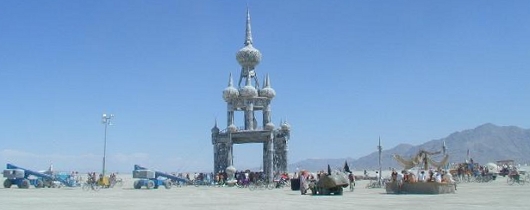Software as a Service by Mark Stone
Previous: Virtualization: One Step Back and Two Steps Forward
The 90s brought us a lot of talk about "the network is the computer", and how all our applications would become network based. Yet in 2010, the basic "knowledge worker" applications for word processing, spreadsheets, and presentations are all still desktop based. Networked computing did relatively little to change the way these workers, who still mostly show up in an office to sit down at a desk every day, interact with these applications.
Who benefited from all this network capability, from the new-found mobility of information?
In 1999, former Oracle executives founded a company called Salesforce.com. Their insight was that it was the salesperson in the field, not the knowledge worker in the office, who was most hampered by the limitations of desktop applications and would be most liberated by making data mobile.
Salesforce.com's key product is Customer Relationship Management (CRM) software, the work horse of the sales world. CRM applications maintain contact information, contact history, sales history, and even forecasting based on sales. CRM has become the most important tool for sales people to track and manage how they do their jobs.
What was unique about Salesforce.com's application was that it wasn't an application in the traditional sense. It was a website. All of the traditional CRM tools had been re-written as interactive web pages on a site you could log into and make use of. While this made for a somewhat clunkier user interface, particularly in the early 2000s, than slicker desktop applications, it accomplished an important liberating step: it meant that a sales person could have access to the full application, and all of its data, from any computer anywhere, provided that computer was connected to the Internet and had a web browser. That computer could be a laptop, or a desktop in the business center of a hotel, or a rent-a-computer at the local Kinko's.
For sales people this was exactly the freedom they needed. It also introduced the world to the form of computer application we now call Software as a Service (SaaS).
Instead of buying software in a shrinkwrapped box, and running a CD to install it on a desktop computer, Salesforce.com's application was simply there, as a service, over the Web. No installation required. For companies using CRM software, this was a simplifying step: no more software to maintain, no bug fixes to apply, no updates to evaluate. Management of SaaS was dramatically easier, and required fewer IT personnel, than traditional software. For Salesforce.com, it gave them a huge revenue advantage over their competitors. In the traditional model a software company sold the software to a customer, and if it wanted more money from that customer it had to persuade the customer to upgrade. Salesforce.com, by contrast, rented access to its service. Its customers habitually paid a recurring fee for access to the software, creating the kind of steady revenue stream other software companies could only dream about.
This was a rare win-win-win in technology:
- The users (sales people) got what they wanted, which was the freedom to easily use their most important software from any location;
- The customers (companies for whom the sales people worked) got what they wanted, which was much less of a headache when it came to installing, managing, and upgrading software;
- The software provider got what they wanted, which was customers who thought it natural to pay every month for the software they routinely used.
Today we have a long list of SaaS that is commonly used, both by businesses and by consumers. Basically any website that is a tool, rather than just something you read, is an example of SaaS. This includes:
- Webmail, like Gmail or Hotmail;
- Mapping applications like Google Maps or Mapquest;
- Groupware collaboration tools like Basecamp or Campfire from 37Signals.


